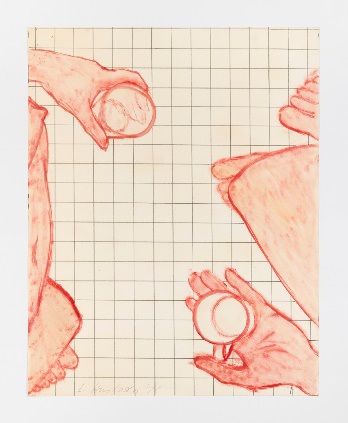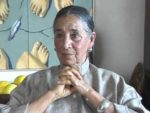
Luchita Hurtado
American, 1920-
Untitled, 1971
Oil and graphite on paper
24 x 19 in.

COMMENTS
Luchita Hurtado (b. 1920 Caracas, Venezuela) works in Santa Monica, California. In 1928 Hurtado immigrated to New York City, where she studied at Washington Irving High School and the Art Students League. She began her career in the early 1940s as a fashion illustrator for Condé Nast and as a muralist for Lord & Taylor. In the mid-1940s, Hurtado frequently traveled between New York and Mexico City, where she worked within an international group of artists and writers who were part of the World War II diaspora. In the late 1940s, Hurtado moved to Mill Valley, California, where she associated with the Dynaton Group. In 1951 she moved to Los Angeles, where she has resided ever since. Recent solo exhibitions include the Annenberg Community Beach House, Santa Monica (2017) and Park View Gallery, Los Angeles (2016). Prior to these, her last solo exhibition was held at the Women’s Building, Los Angeles (1974). Hurtado has exhibited sporadically from the 1950s until the present, including at Night Club Gallery, Chicago (2016); Carnegie Art Museum, Oxnard, California (1994); Tally Richards Gallery, Taos, New Mexico (1970); and Paul Kantor Gallery, Los Angeles (1953).
https://hammer.ucla.edu/exhibitions/2018/made-in-la-2018/luchita-hurtado/
SBMA CURATORIAL LABELS
In 1928, at the age of 8, Luchita Hurtado emigrated from Venezuela to New York City, where she was raised. At age 18 she married a Spanish journalist, who introduced her to a community of Latin American writers and artists, including Mexican painter Rufino Tamayo. In the 1940s, divorced with two children, she began freelancing as a fashion illustrator and became good friends with the artist Isamu Noguchi. She moved with her second husband, Wolfgang Paalen, to Mexico and befriended the Surrealist Leonora Carrington. After several years in San Francisco, Hurtado moved in 1950 to Santa Monica to be with the painter Lee Mullican. She and Mullican kept separate studios throughout their 48 years together, until his death in 1998.
Hurtado first exhibited her work in the 1970s, but it is only recently that her vibrant and evocatively biomorphic works are receiving the notoriety they deserve. Her work often combines abstraction and figuration, rendered with bold, colorful hues and sinuous lines, reflecting the patterns and colors of Latin American textiles that she collects. Informed by Surrealism and the visual culture of her native Venezuela, Hurtado sees her work as personal and intuitive: a spiritual connection between herself, the natural world and its forms.
- Summer Nocturne, 2018
